 |
 |
 |
| |
Safety, Tolerability, Pharmacokinetics, and Antiviral Activity of JNJ-56136379, a Novel HBV Capsid Assembly Modulator, in Non-cirrhotic, Treatment-na´ve Patients with Chronic Hepatitis B.
|
| |
| |
"JNJ-379 binds to the HBV core protein and has a dual mode of action
- Firstly, JNJ-379 interferes with the HBV capsid assembly, resulting in the formation of non-functional capsids devoid of HBV RNA and DNA2
- Secondly, JNJ-379 prevents cccDNA formation during de novo infection, probably by interfering with capsid disassembly."
from Jules: this report came from Arrowhead recently HBV-New Approach May be Needed: Cure Not Likely - (10/16/17)
BUT....
"Totally disagree with Arrowhead. If anything the accumulating data have become more convincing that higher cure rates are possible. I do not believe in the siRNA approach or dependence on the reactivation of the immune system to cure patients. ... [believe in] antiviral s, and believe in directly targeting the virus, in this case cccDNA. Inability to decrease cccDNA levels is why we currently have low cure rates. ... .. Cure in woodchucks correlated with elimination of cccDNA and drop in HBsAg...... by adding a CpAM inhibitor to Nucs, we [expect to] effectively block replication and cccDNA replenishment, allowing existing cccDNA pools to decay away in the subsequent months. Decreasing cccDNA pools (source of the problem) will also result in decreases in pgRNA and HBsAg. The HBsAg produced from integrated viral DNA is of no true clinical relevance and those hepatocytes that harbor integrated viral DNA (non-infectious) will also turn over with time and disappear as we prevent any new infections or subsequent integration events. POC for this approach will be shown....." unnamed source
Reported by Jules Levin
AASLD: The Liver Meeting® 2017, October 20-24, 2017, Washington, DC
Fabien Zoulim1,2, Jeysen Z Yogaratnam3, Joris J Vandenbossche4, Oliver Lenz4, Willem Talloen4, Christelle Vistuer4, Iurie Moscalu5, Adrian Streinu-Cercel6, Stefan Bourgeois7, Maria Buti8, Javier Crespo9, Juan Manuel Pascasio10, Lawrence Blatt3, John Fry3
1Department of Hepatology, Croix Rousse Hospital, Hospices Civils de Lyon, Lyon, France; 2INSERM U1052-Cancer Research Institute of Lyon, Lyon, France; 3Alios Biopharma (a Janssen Pharmaceutical Company of Johnson & Johnson), South San Francisco, CA, USA; 4Janssen Pharmaceuticals, Beerse, Belgium; 5Spitalul Clinic Republican, Chisinau, Moldavia; 6Carol Davila University of Medicine and Pharmacy, National Institute for Infectious Diseases "Prof.Dr. Matei Bals", Bucharest, Romania; 7ZNA Jan Palfijn, Clinical Pharmacology Unit, Merksem, Belgium; 8Hospital Universitario Vall d'Hebrˇn, Unidad de Heptologia, Barcelona, Spain; 9Hospital Universitario Marques de Valdecilla, Unidad de Ensayos Clinicos, Santander, Spain; 10Hospital Universitario Virgen del Rocio, UGC Enfermedades Digestivas, Sevilla, Spain
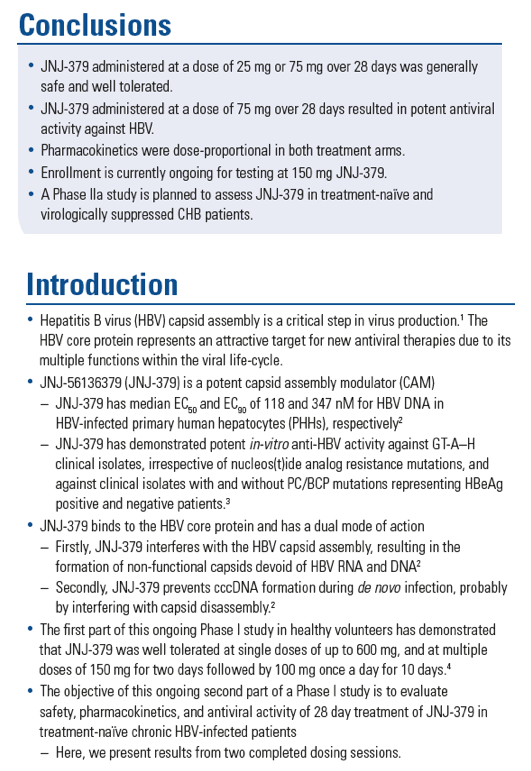
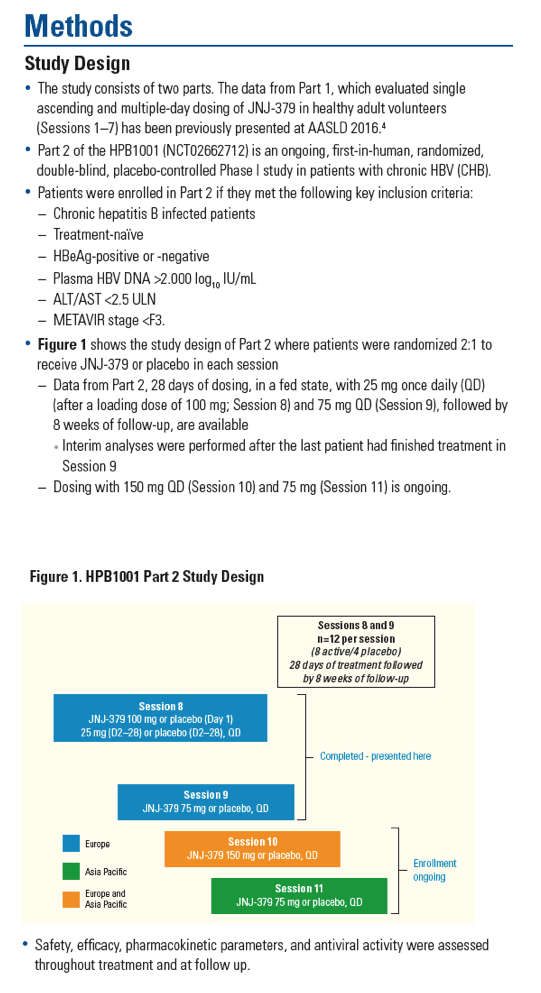
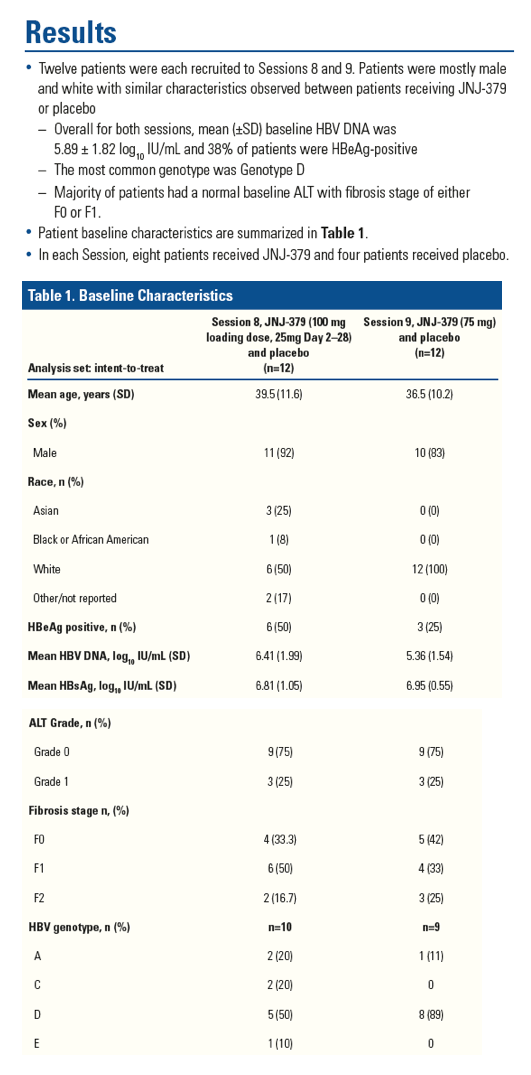
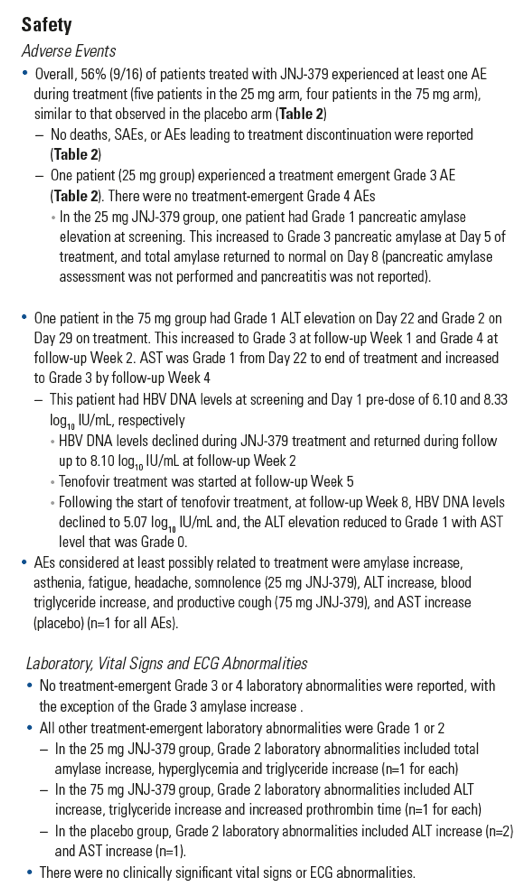
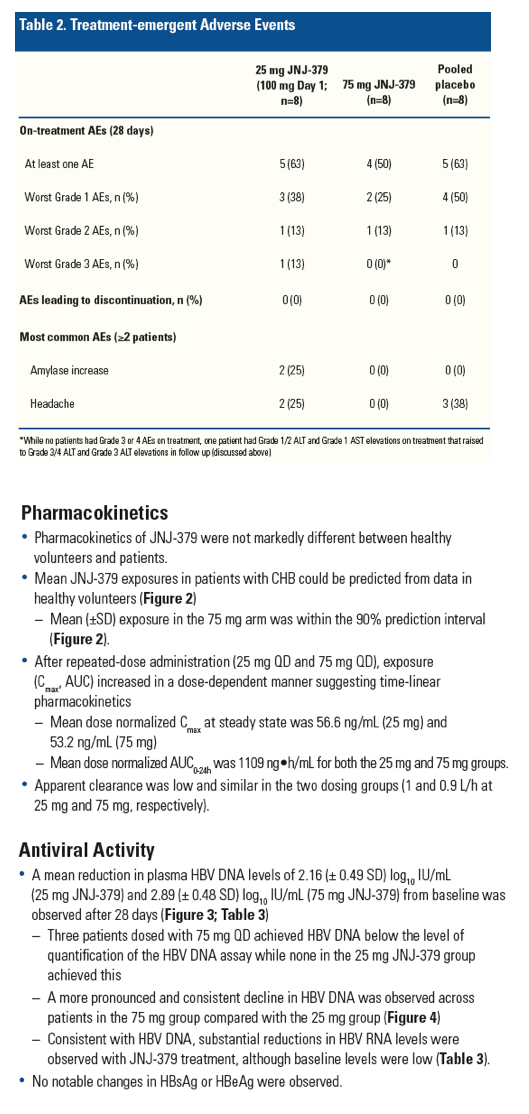

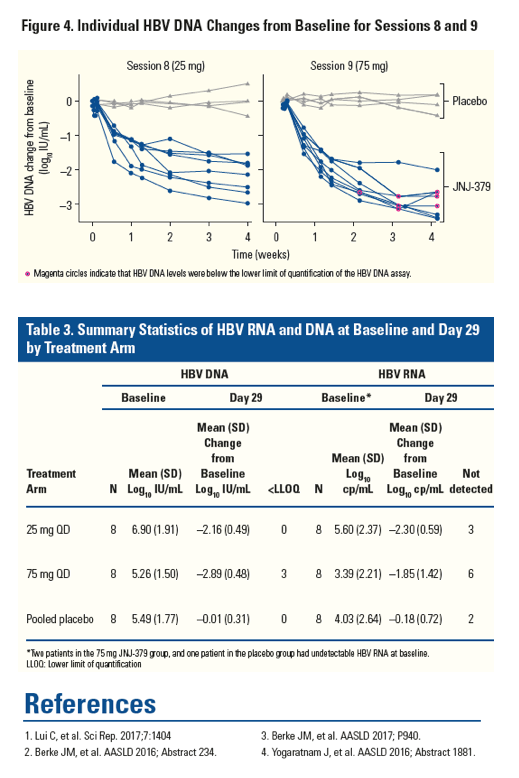
|
| |
|
 |
 |
|
|